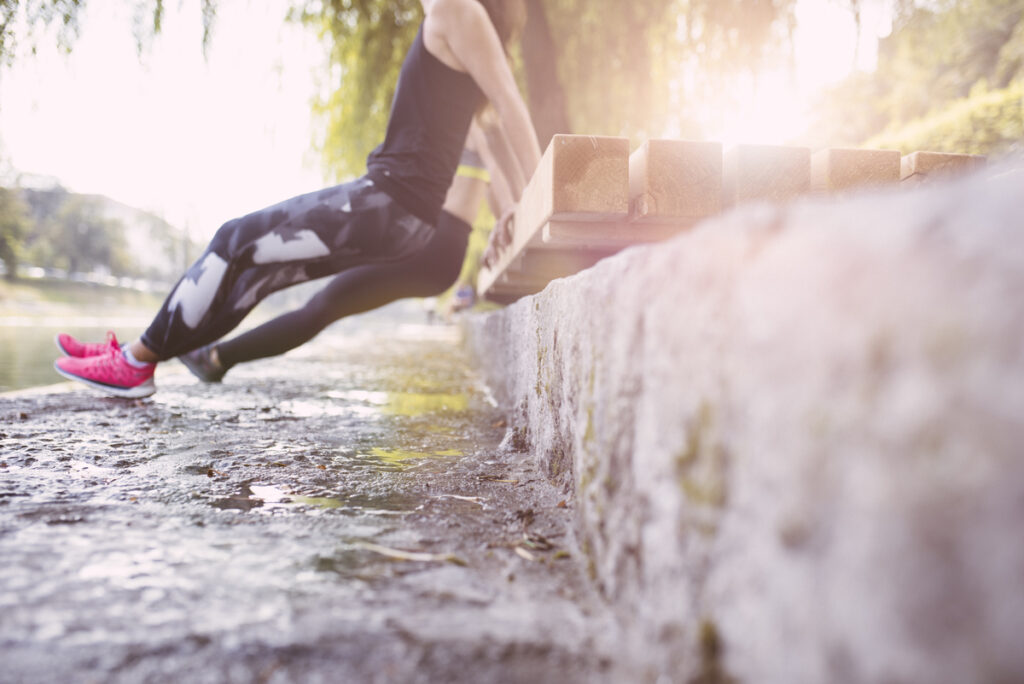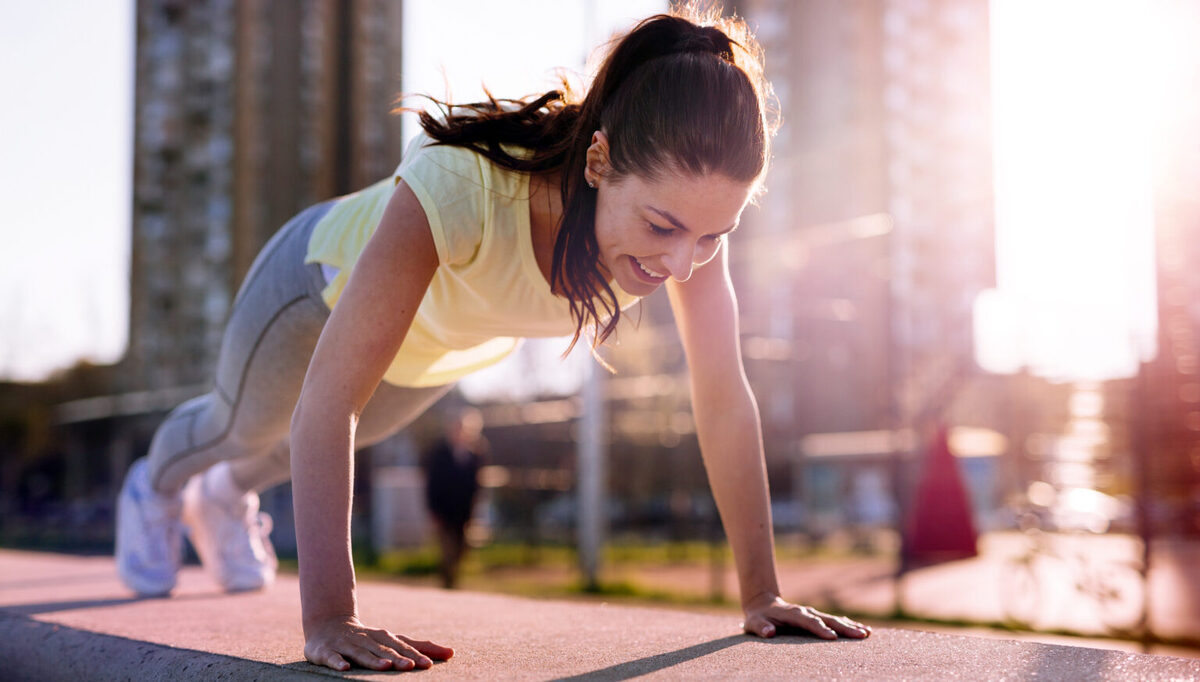Calisthenics is the name of the trend sport that is currently gaining in popularity. Never heard of it? No problem! In short, calisthenics is a full-body workout. With one great feature: anyone can practise this – anywhere. It is suitable for both younger and older people and is not tied to a specific location. Instead of using sports equipment such as dumbbells and weights, the participants use their own body weight for a variety of exercises. That is why these physical activities can be carried out wherever you want: In the gym, in the park, or simply at home. Regular calisthenics training promotes endurance, physical strength and body control and thus contributes to fitness and general well-being.
Table of content
- The origins of calisthenics
- The advantages of Calisthenics
- Calisthenics basic exercises
- What to bear in mind during training
The origins of calisthenics
Calisthenics is reminiscent of the trim trails that celebrated their heyday in the 70s. However, it is a much younger sport that emerged in New York at the beginning of the 21st century. There, it became popular to undertake sporting activities outdoors, in public sports parks. Since the athletes had no equipment such as dumbbells or weights – apart from the installed pull-up bars and parallel bars – they trained with their own body weight.
The term calisthenics is composed of the Greek words ‘kalos’ = beautiful and ‘sthenos’ = strength. It means ‘beautiful strength’ – and this name says it all. Because the popular sport requires an enormous amount of strength and, when performed correctly, also looks pretty impressive. No wonder, then, that the videos of the athletes spread so quickly over the internet and the sport became popular in other countries. In 2011, the World Street Workout and Calisthenics Federation (WSWCF) hosted the first World Calisthenics Championships.
The advantages of calisthenics
Of course, calisthenics exercises can also be done indoors. However, the sport is intended as an outdoor sport or so-called street workout. We hardly need to explain that the fresh air is a big advantage here. However, calisthenics also has other advantages.
- As a whole-body workout, it strengthens the muscles and thus the body’s power. But it also promotes endurance and body control. Since it activates all kinds of muscles, the training also burns fat quickly and is perfect for helping you lose weight.
- Calisthenics does not have a prescribed routine. The training routine can be completely individualised. In this way, you can set your own pace and focus on the exercises according to your own wishes.
- It is not necessary to bring training equipment such as dumbbells or weights with you, as you train with your own body weight. In addition, the environment, such as park benches or horizontal bars at playgrounds, can be used for individual exercises.
- Calisthenics are inexpensive because no gym membership is required and no money is needed for special training equipment. In addition to costs, it also saves time, because the length of the workout can of course be determined individually.

Calisthenics Basic Exercises
Many of the Calisthenics exercises do not involve any prerequisites. This means that they can also be performed by beginners without any problems. The individual exercises can be put together to form an individual training routine. It is advisable to start with a few repetitions of a training session and increase the number later as strength and endurance increase, or to shorten the breaks between sessions. Many basic exercises can also be transformed into more complicated variations with only minor modifications. We have listed a few of these basic exercises for you:
- Pull-ups: An effective muscle workout for the back and a solid workout for the arm muscles, especially the biceps.
- Push-ups: The classic among strength training exercises. The range of action changes depending on how they are performed – e.g. one-arm push-ups, or push-ups on the knees.
- Squats: There are also squats in many different variations (jumping squats, pistol squats, etc.); they mainly train the muscles in the legs and buttocks.
- Dips: The most common version is performed on the bar, but a variation, the so-called Bench Dips, can be trained on benches. This exercise strengthens the chest muscles and triceps.
- Hanging Leg Raises: This exercise is usually performed on a pull-up bar or wall bars, but can also be done lying on the floor. They give stability to the torso and train the abdominal muscles – perfect for athletes who want a six-pack!
What to keep in mind during training
Just like before doing any other sport, the golden rule before calisthenics training is: warming up is a must! A short warm-up activates the muscles and ligaments and prepares them for the upcoming effort. If you don’t warm up sufficiently before training, you can easily get pulled muscles or serious injuries.
If the training takes place in a public space, but not in a sports park, the surroundings should be taken into account. The best place to train is in an area with little traffic, such as a park or – as long as it is not overcrowded and you do not want to disturb children playing – in a playground. Benches and climbing frames can be used as a substitute for pull-up bars and parallel bars.
A little tip for sports-mad parents: it’s super easy to combine play and exercise! So why not take your child on a trip to the park and let him or her ‘join in the training’. For example, while you do bench dips, your child can jump rope or swing a few rounds. In no time at all, you’ve created a little circuit training and you’re giving your little one the exercise they need.
Do you have a little exercise muppet at home? Then read our blog post “Motivating children to exercise – this is how it’s done”!
Picture 1: nd3000 / Signature Collection / istockphoto.com
Picture 2: Azman Jaka / Essentials Collection / istockphoto.com

